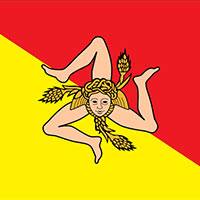Segesta (Sicily)
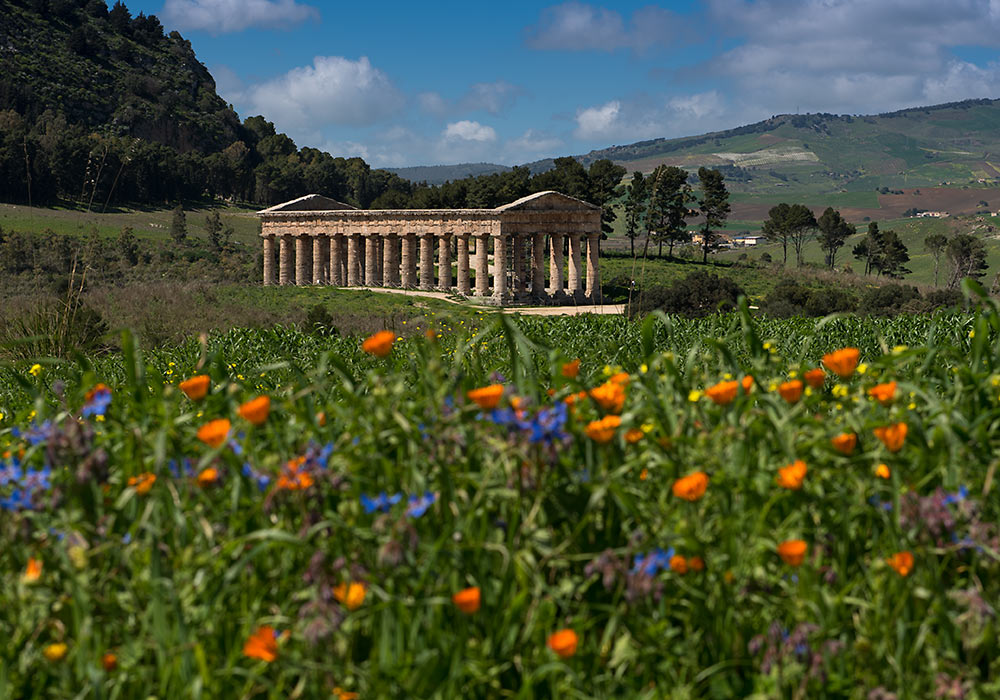
Segesta (Sicilian: Siggésta) was one of the major cities of the Elymian people (the other were Eryx and Entella). It was destroyed by Agathocles in 307 BC, but recovered. The temple at Segesta was probably never finished.
The beautiful temple is situated 304m above sea level. Right behind it is a deep ravine formed by the Pispisa torrent.
The Elymians
Segesta held prominence as the principal city of the enigmatic Elymian civilization, shrouded in historical obscurity. Legend traces the lineage of the Elymians back to the exodus of refugees from the legendary city of Troy following the turmoil of the Trojan War.
The strategic presence of the Greek settlement Selinus, known as Selinunte, played a pivotal role in the fortunes of Segesta. While initial efforts at trade were made between the two cities, these overtures ultimately gave way to bitter enmity, as Segesta and Selinunte became entrenched adversaries in the annals of ancient Mediterranean history. Boundary disputes with Selinus escalated into open warfare multiple times after 580 BC.
Initially seeking alliance with Athens against Selinunte, they inadvertently triggered the disastrous Sicilian expedition of 415–413 BC. Following this setback, they encouraged Carthaginian intervention against Selinunte in 409 BC, ultimately leading to the downfall of their rivals.
However, during the First Punic War, they shifted allegiance, siding with Rome instead of Carthage. Under Roman rule, the Elymians enjoyed privileged status and were exempt from taxes. This was reportedly due to their claimed Trojan ancestry, which was seen as establishing kinship with the Roman people, who also traced their lineage back to Troy. Under Roman dominance, the Elymians seemingly faded from prominence, likely assimilating into the broader Sicilian population.
Recent archaeological investigations suggest that during the Norman period, the site saw a resurgence in occupancy by a Muslim community. Excavations have revealed the presence of a Muslim necropolis and a mosque dating back to the 12th century, situated adjacent to a Norman castle. Indications point towards the mosque's destruction following the ascension of a new Christian ruler at the onset of the 13th century. By the latter half of the 13th century, it seems the city was ultimately deserted.
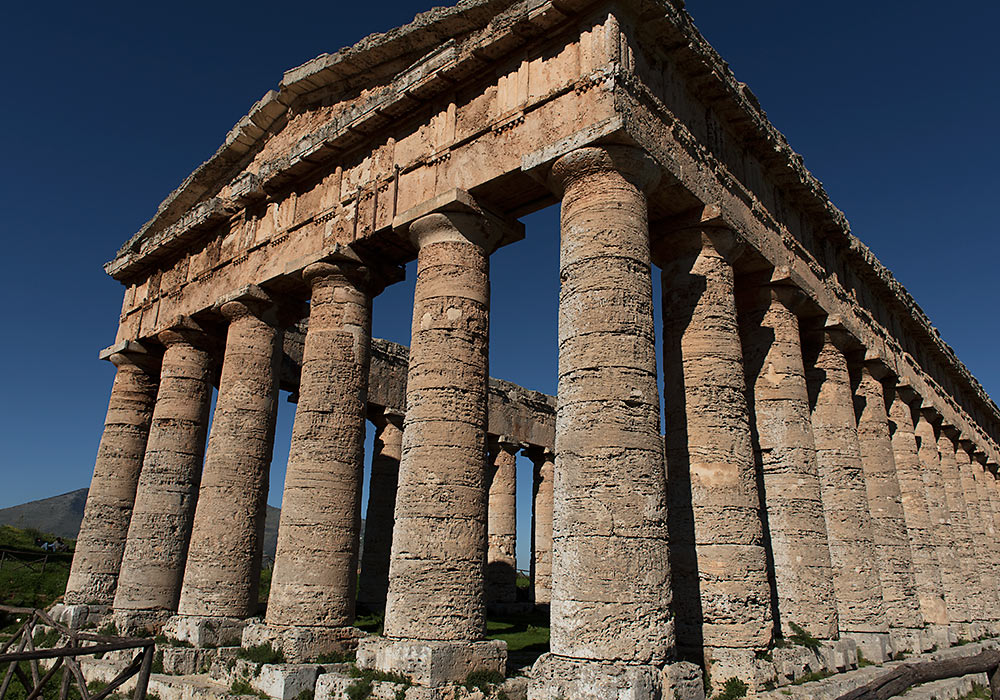
The temple at Segesta.
In 414BC hostilities flared up between Segesta and Selinus (Selinunte). Since Segesta didn't get any help from Akragas (Agrigento), they went to to Athens during the winter 416/415 to beg for help. Athens had for a long time had ambitions in Sicily, and now saw an opportunity to help their allies and even add new conquests to their empire. After a series of problems during the preparations, the fleet finally left for Sicily. The Athenian expedition in Sicily (415-413 BC) was a complete disaster for Greece. Later Segesta asked Carthage for help, leading to the total destruction of the city of Selinus (Selinunte) by the hands of Carthage. Segesta remained an ally of Carthage, it was besieged by Dionysius of Syracuse in 397 BC, and it was destroyed by Agathocles in 307 BC, but recovered.
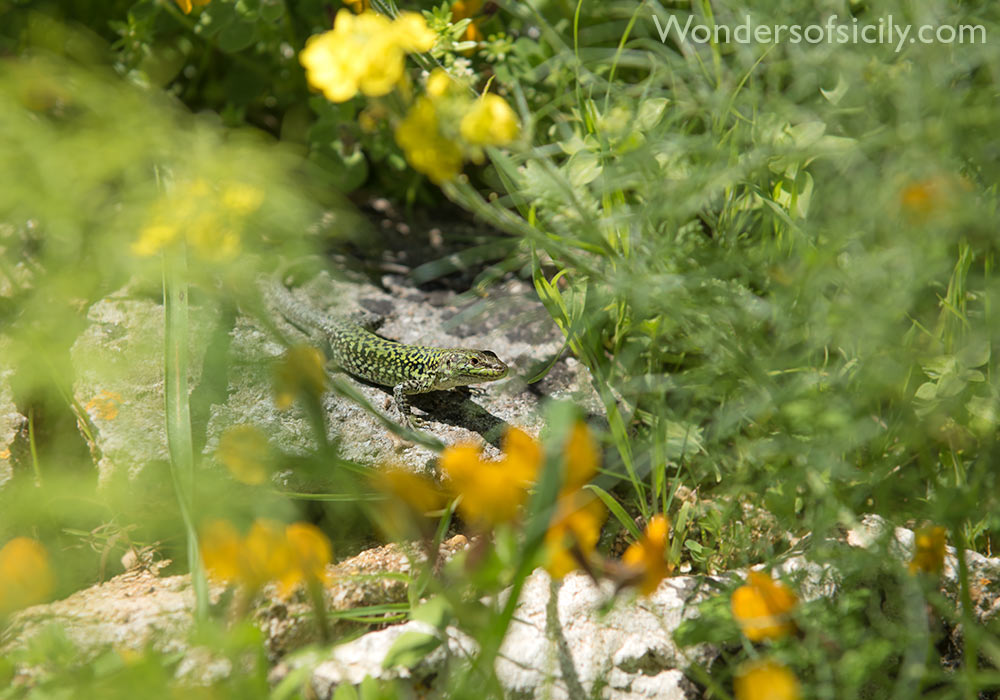
A cute little lizard at Segesta thinking he can hide from the cameraman. Oh no.
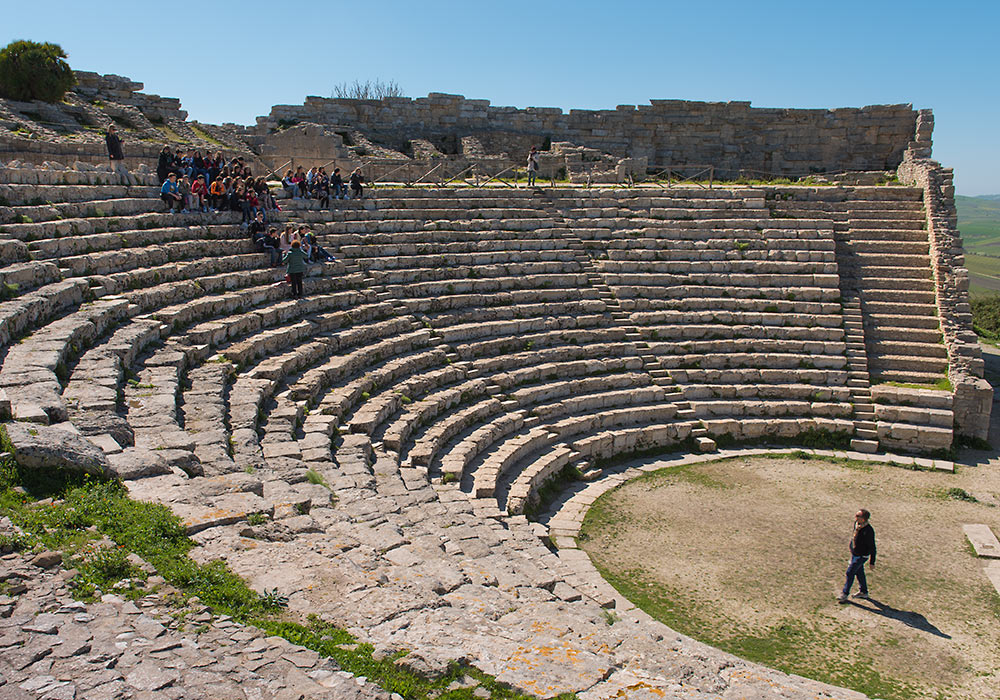
The theatre at Segesta.
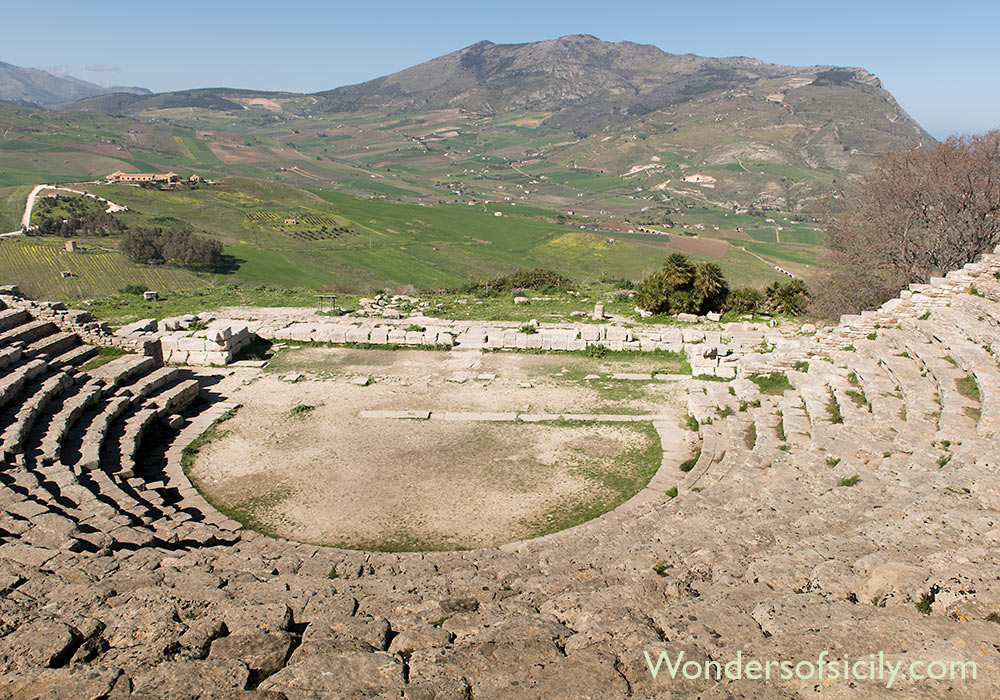
The breathtaking view from the theatre at Segesta.
Danièle Huillet og Jean-Marie Straubs film Antigone (1992) was filmed at the Segesta theatre.
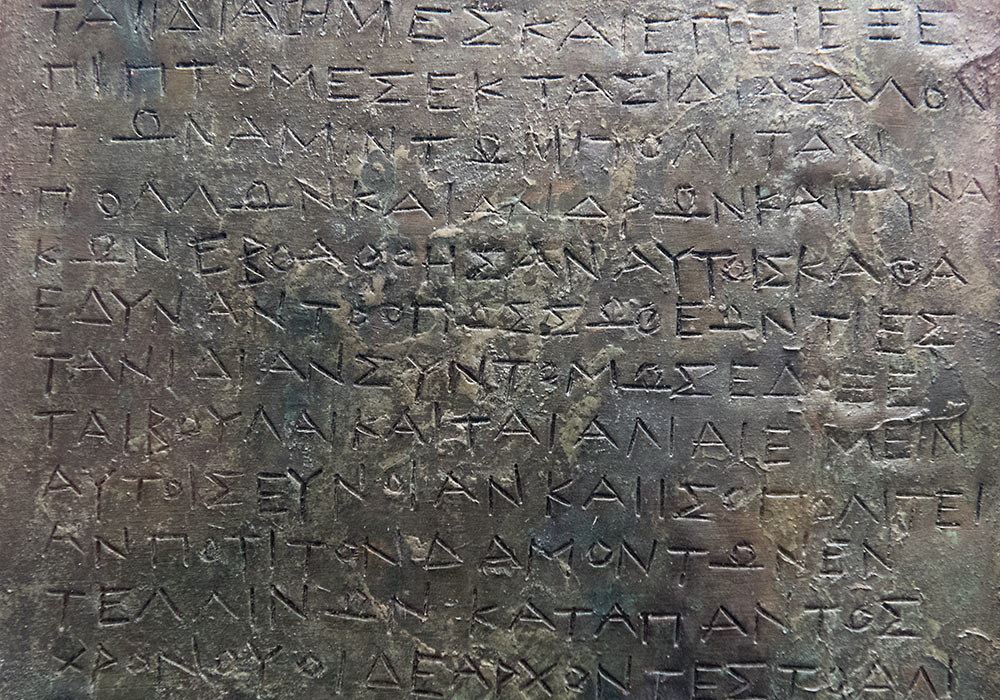
Decree (detail of a bronze tablet) by the Entellans in honour of the Segestans: «Under the archons Artemidoros, son of Eielos and Gnaios son of Oppios, in the first day of the month of Panamos. Since the Segestans have always been benevolent towards us, while we were in our land as well as after we were expelled from there, and when many of our people were captured, both men and women, they made their best endeavour to help them return safely to their city, it was decided by the council and the assembly that they shall enjoy forever the benevolence of the people of Entella as well as isopoliteia. The archons shall place this decree in the bouleterion after having it engraved on a bronze tablet.» (Archeological Museum, Palermo)
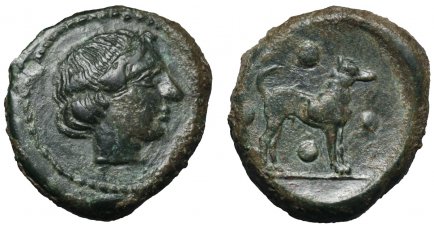
Coin from Segesta, circa 420 BC.
Description: Sicily, Segesta Æ Trias. Circa 420 BC. Head of the nymph Segesta right, wearing hair-band / Hound standing right with tail curved upwards; around, four pellets. CNS 2; SNG Copenhagen 586; SNG ANS 655-657. 7.54g, 17mm, 4h. Very Fine. Very Rare. From the Eckenheimer collection.
Source: Roma Numismatics Ltd (with permission)
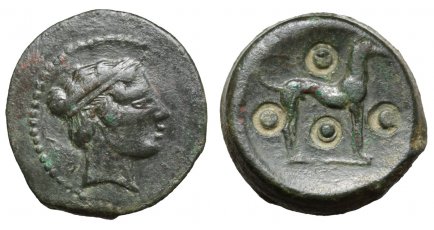
Coin from Segesta, circa 410-400 BC.
Description: Sicily, Segesta Æ Trias. Circa 410-400 BC. Head of the Nymph Segesta to right / Hound standing to right; four pellets within incuse circles around. Hurter, Segesta p.141ff, pl. 29, 7; CNS I p. 296 17. 4.15g, 21mm, 3h. Very Fine. Rare. From the Eckenheimer collection.
Source: Roma Numismatics Ltd (with permission)
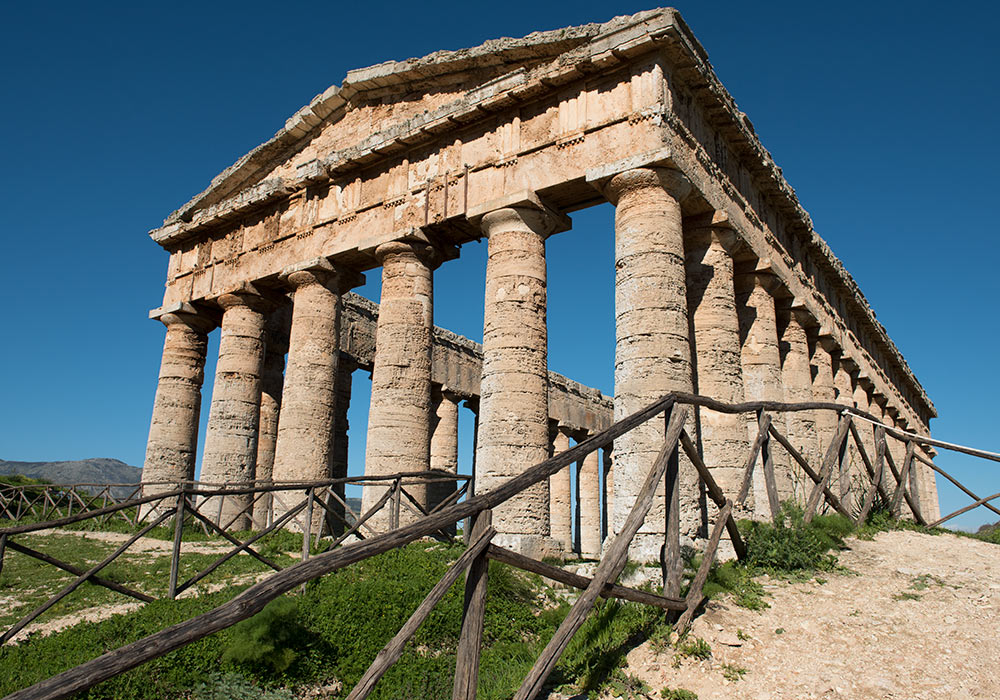
The ancient temple at Segesta.
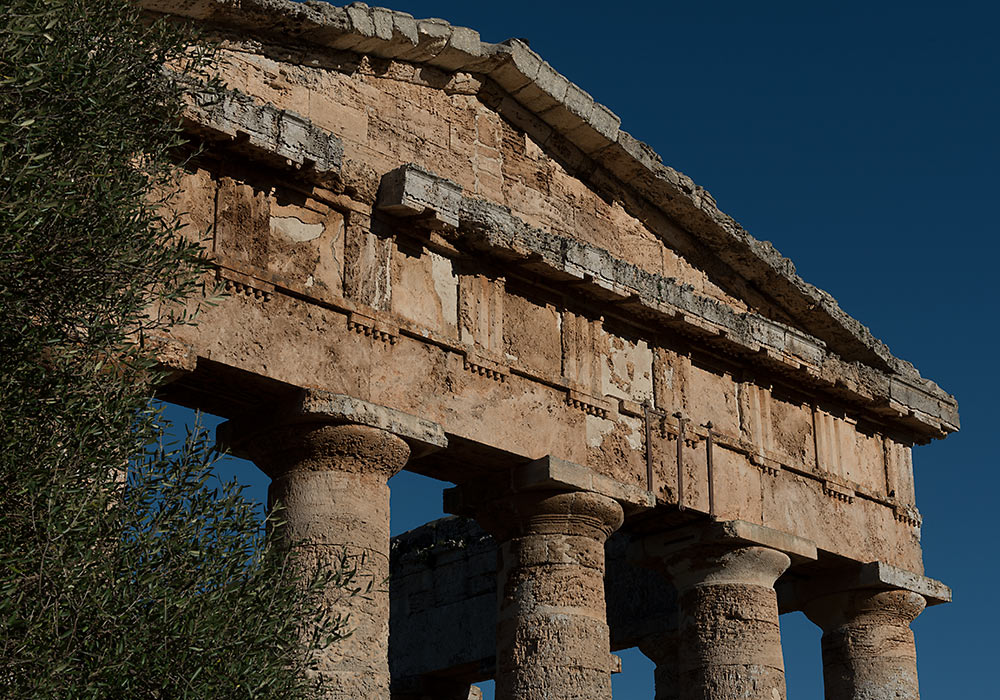
The ruins and the location is overwhelmingly beautiful.
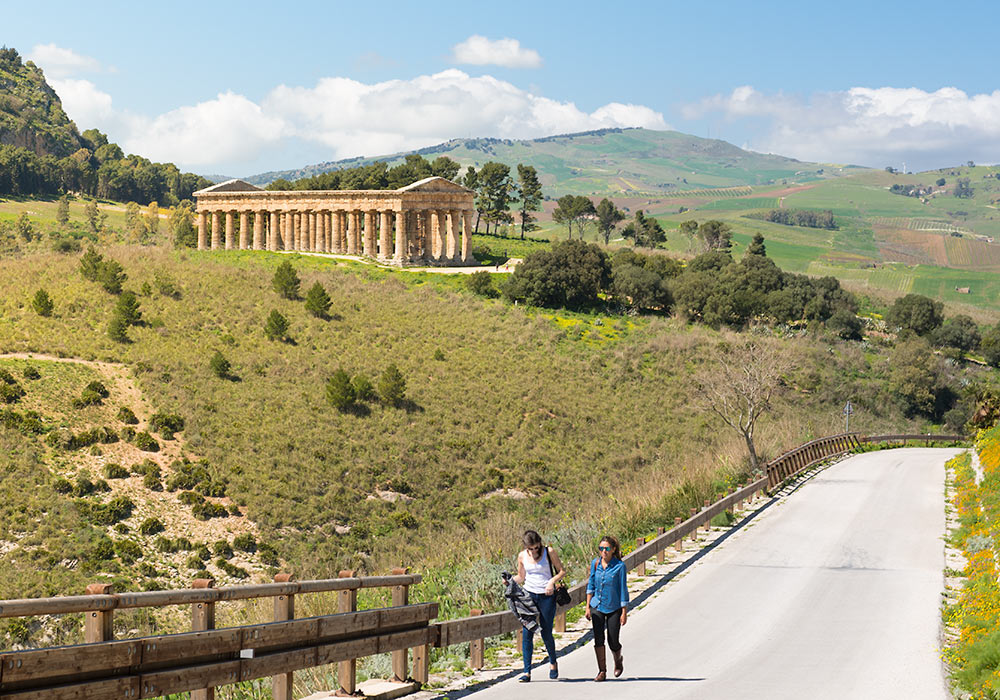
The ancient temple at Segesta. The ladies have started the 20-25 minutes walk up to the theatre. There's a bus service you can use if you like.
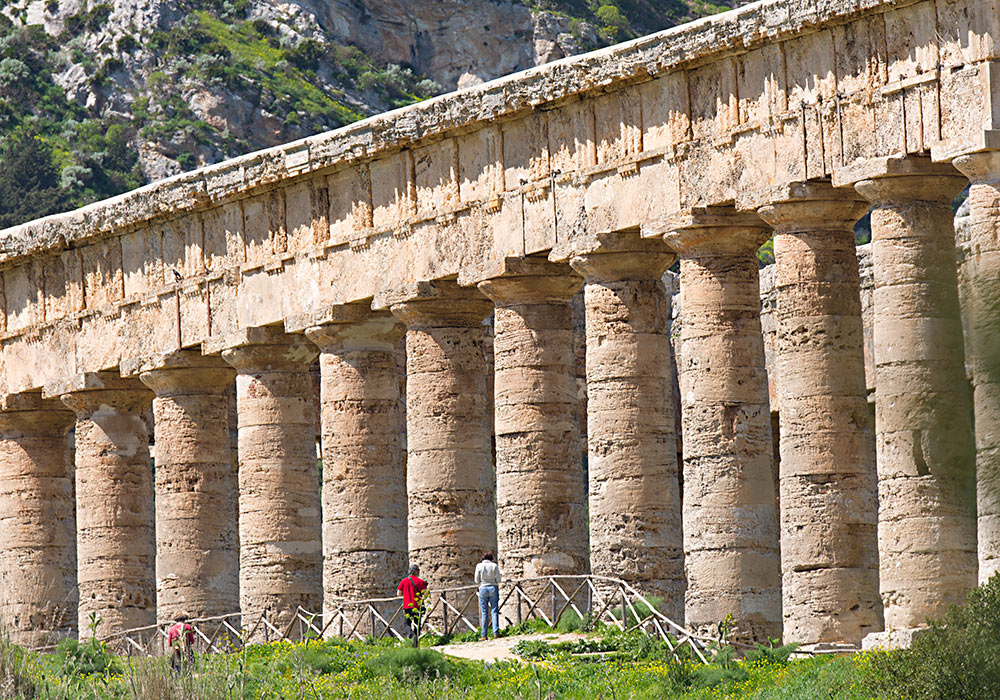
Tourists at Segesta.
CLICK HERE to see photos from Selinunte!
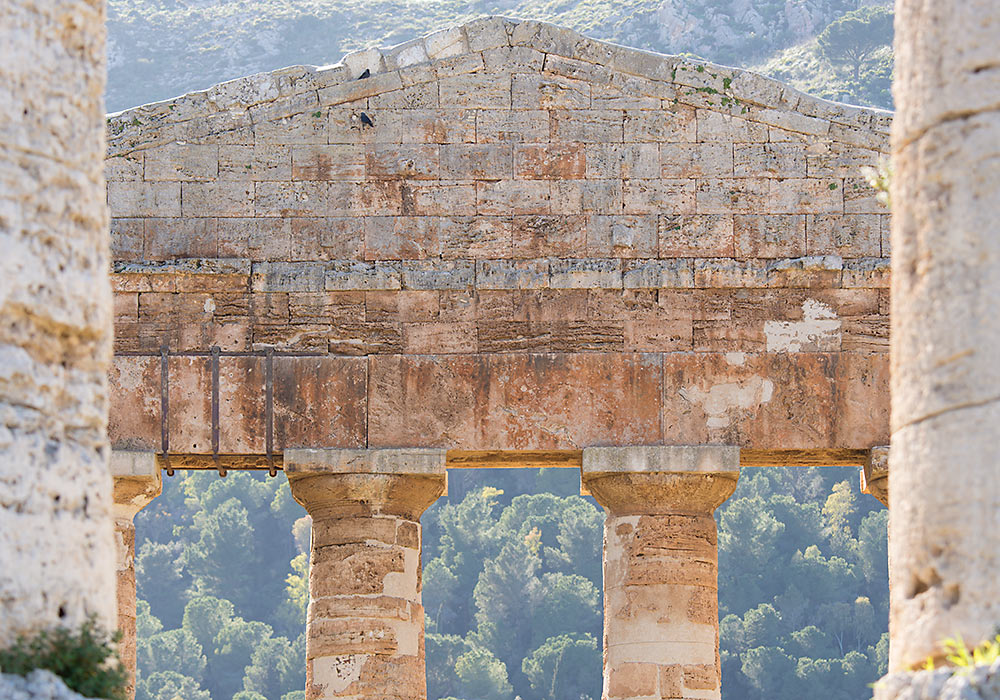
The doric temple at Segesta is remarkably well preserved.
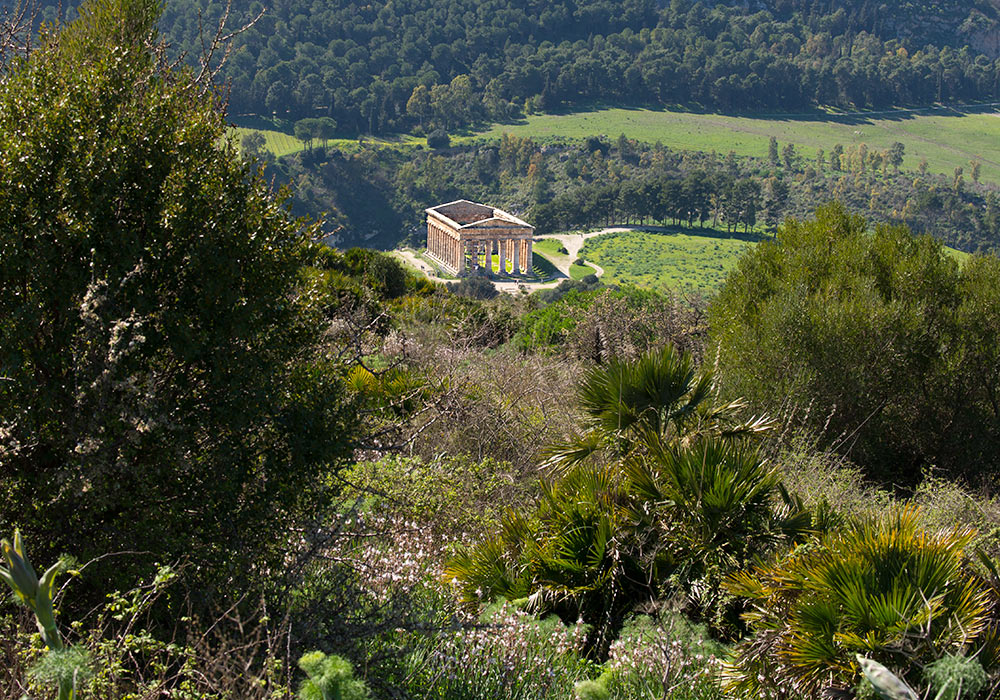
If you choose to walk up to the theatre, you get several rewarding views of the temple, especially if you leave the road.
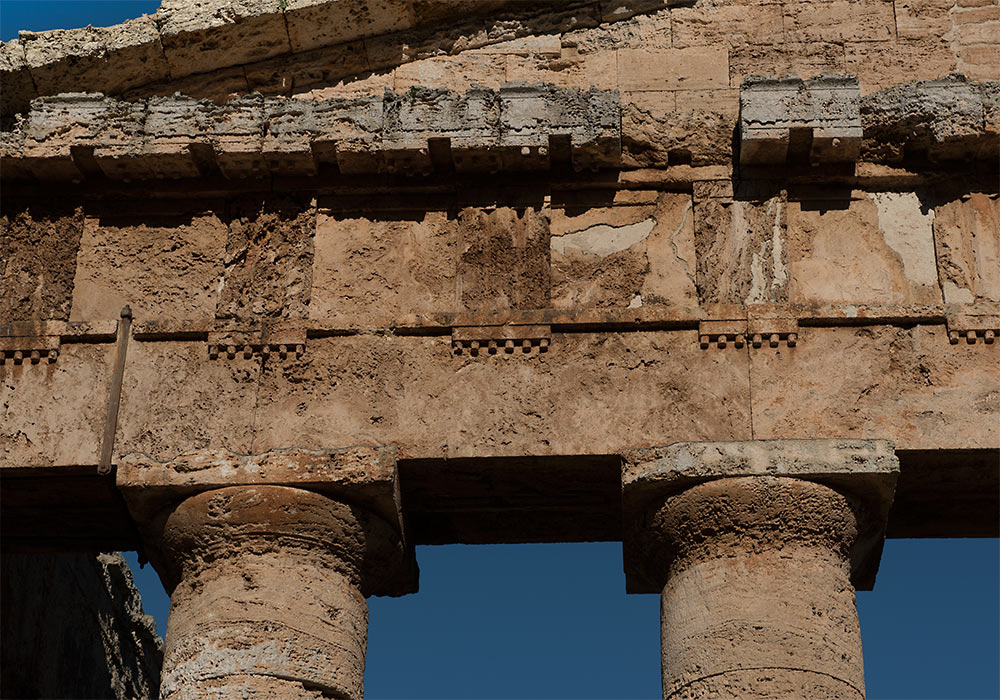
Staggering detail of the Doric Temple at Segesta.
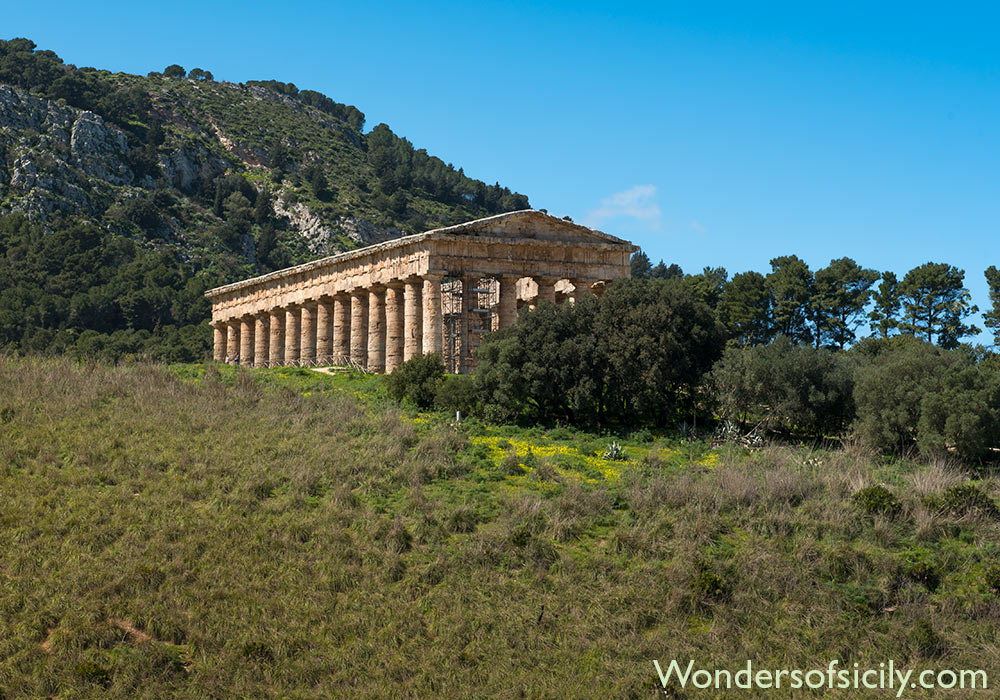
The temple.
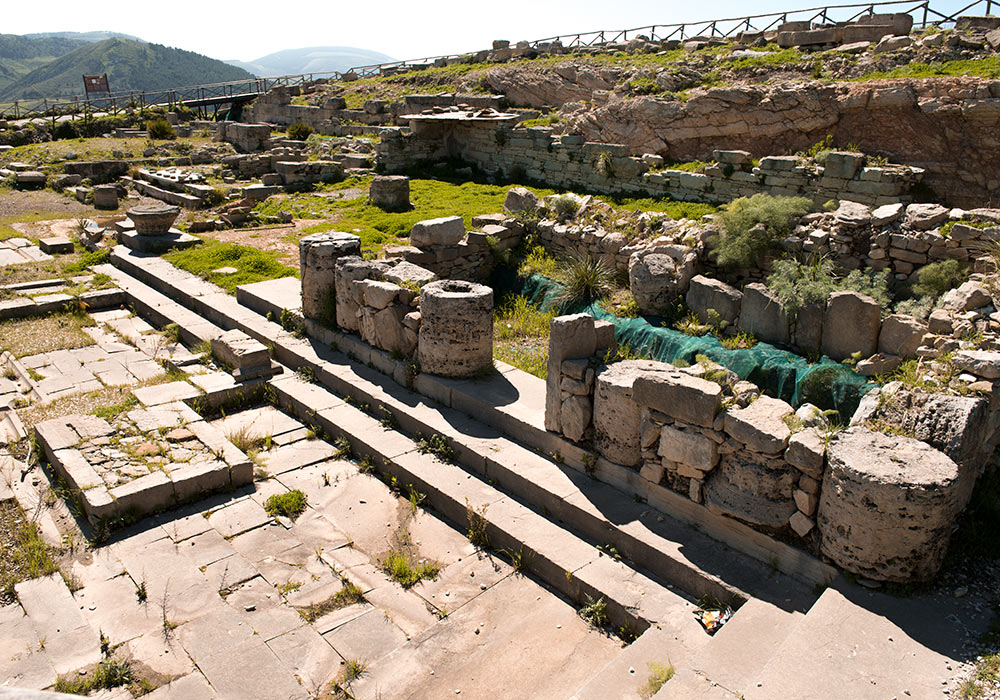
The agora of the Hellenistic city later became the Forum of the Roman city. The area fell to ruins in the third century AD, but was inhabited during the medieval period.
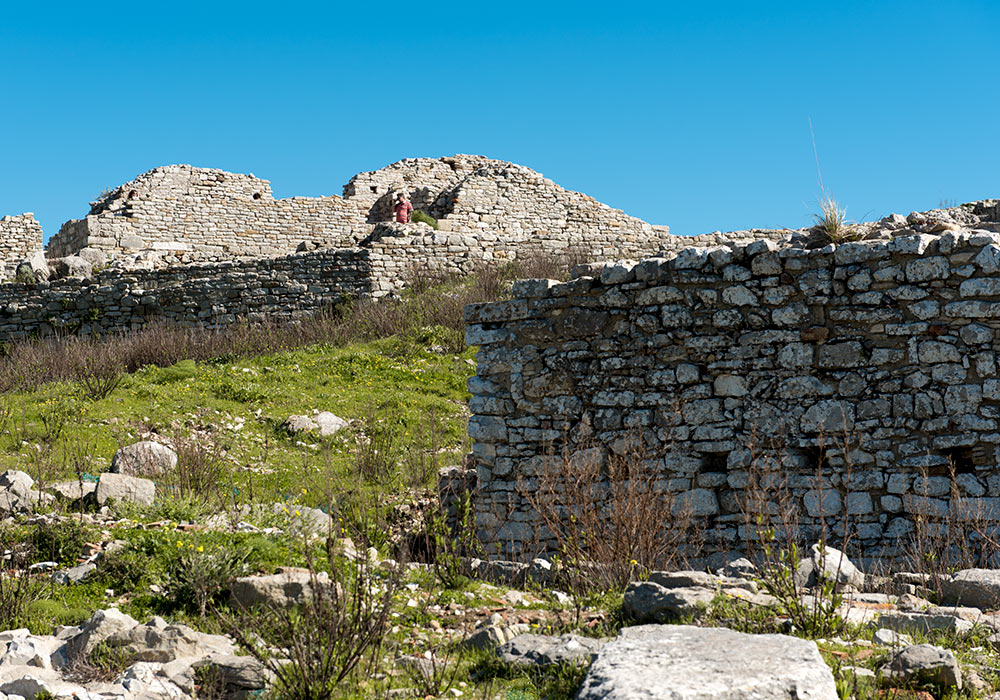
Remains of a past settlement.
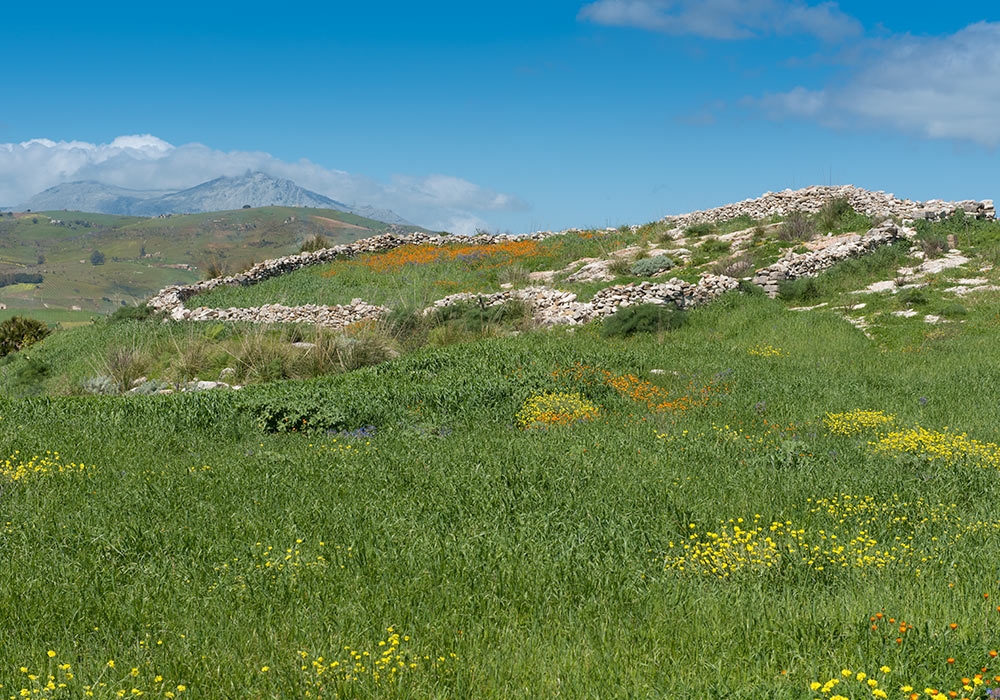
Remains of a past settlement
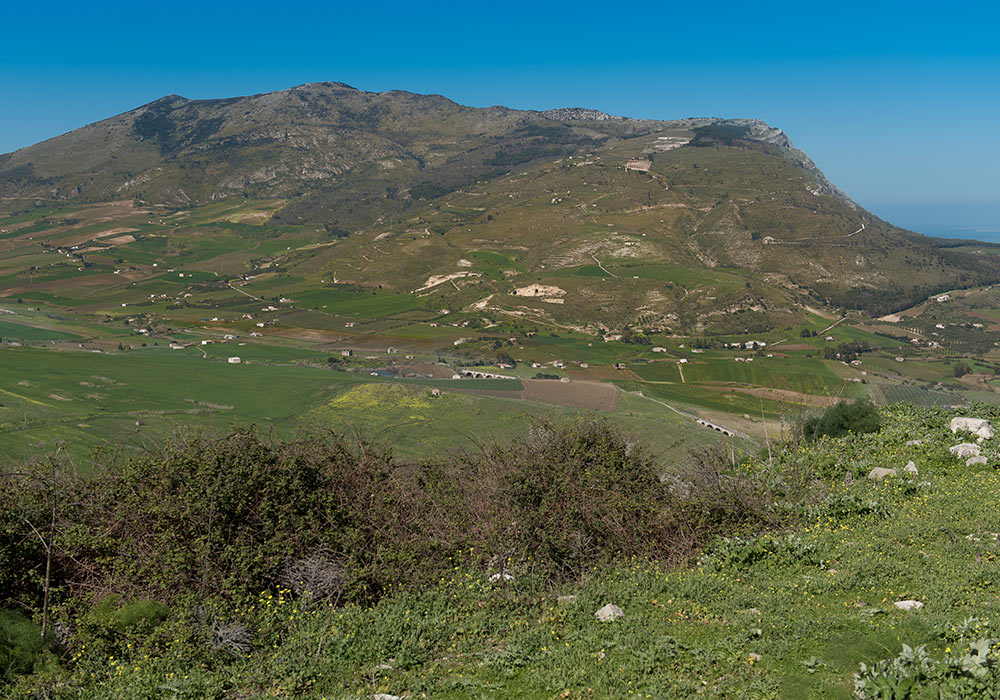
The view from Segesta is breathtaking.
CLICK HERE to see photos from Solunto!
The remains of the mosque at Segesta (AD 12th century)
Source: Pier Paolo Racioppi "Mosque" in Discover Islamic Art, Museum With No Frontiers
The remains of a mosque are located in the immediate vicinity of the ancient theatre of Segesta, outside the fortified area of the late medieval settlement. It is laid out over an irregular rectangle 20.5 m long and 11.4 m wide, and was constructed in a single phase using a uniform building technique (limestone blocks bound with mud). The floor is bare rock. The mihrab niche on the south side, correctly oriented to within a few degrees of southeast, is 2 m wide on the inside and 1.5 m deep. It is rectangular on the outside and protrudes from the wall by about a metre. There are no traces of a minbar.
It was probably a rural mosque from Norman times, which was built, along with the fortified settlement, on high ground by an Islamicised people fleeing the lands gradually being conquered by the Normans.
It is not clear whether it served just the village or the entire surrounding area. An Islamic necropolis has been discovered nearby. The mosque was dated from the discovery during excavations of ceramic remains dating back to the 12th century.
Source: Pier Paolo Racioppi "Mosque" in Discover Islamic Art, Museum With No Frontiers, 2016. Link
Chaos (Kaos)
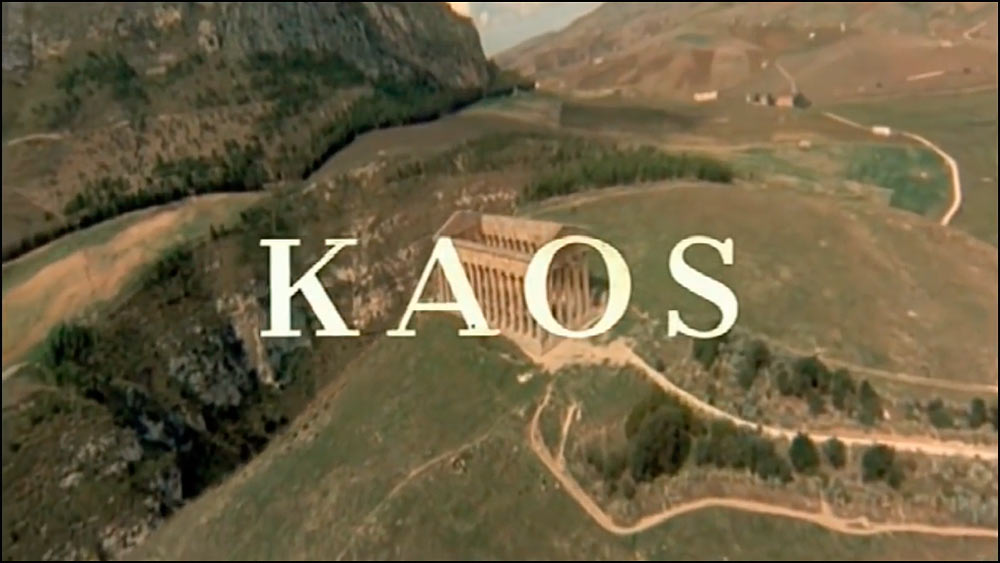
Segesta seen from the raven's point of view. Screenshot from the opening sequence of Kaos (directed by Paolo and Vittorio Taviani). The film is based on four short stories by Luigi Pirandello.
CLICK HERE for more film locations in Sicily!
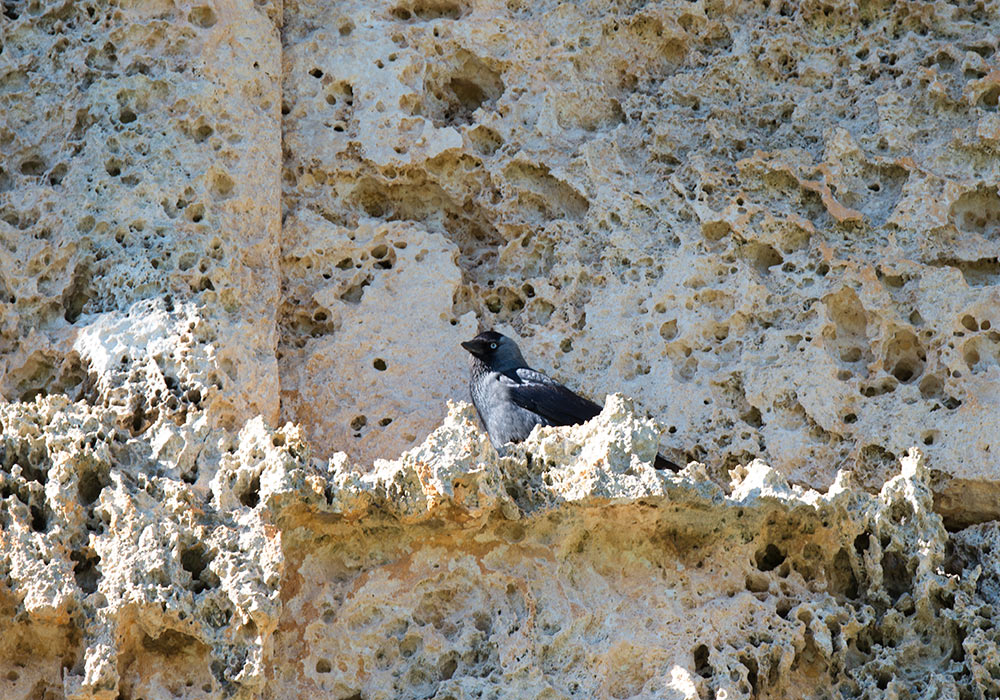
The temple at Segesta is inhabited by a colony of jackdaws.
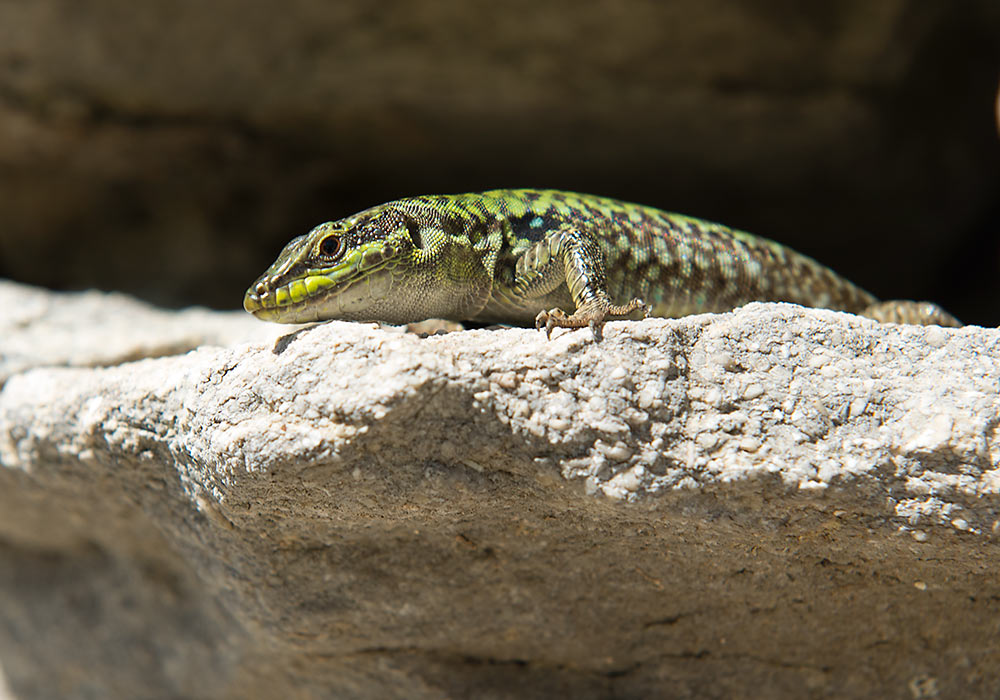
Lizard living at the ancient theatre in Segesta.

